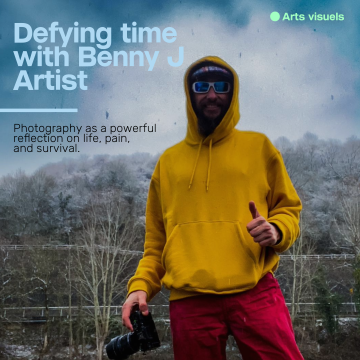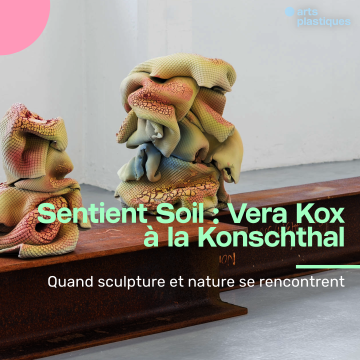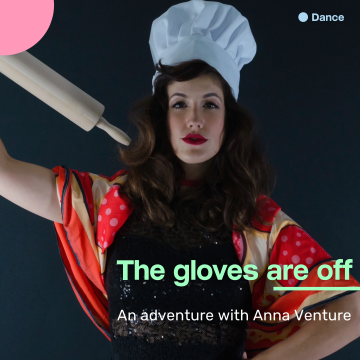26 sep. 2024Defying time with Benny J Artist

Photo : © Benny J Artist
Artist Benny J has been exploring the world of pain and rare disease through the camera lens since 2022. As his latest exhibition, “A Journey”, opens at Robert Schuman Hospital, the versatile artist shares the story behind the images.
If you’ve ever found yourself in the waiting room of A&E or a Maison Médicale emergency drop-in clinic in Luxembourg, waiting is usually the last thing you want to do. Sulphur orange plastic chairs glow like embers in these lonely, brightly lit spaces of ennui. Benny J is a regular presence in these spaces.
“As a child, I spent every week in doctors waiting rooms. Honestly, I just hated waiting,” the Australian artist says tiredly during a video call one week into a new exhibition of his photography at the waiting room of Hôpital Robert Schuman in Kirchberg.
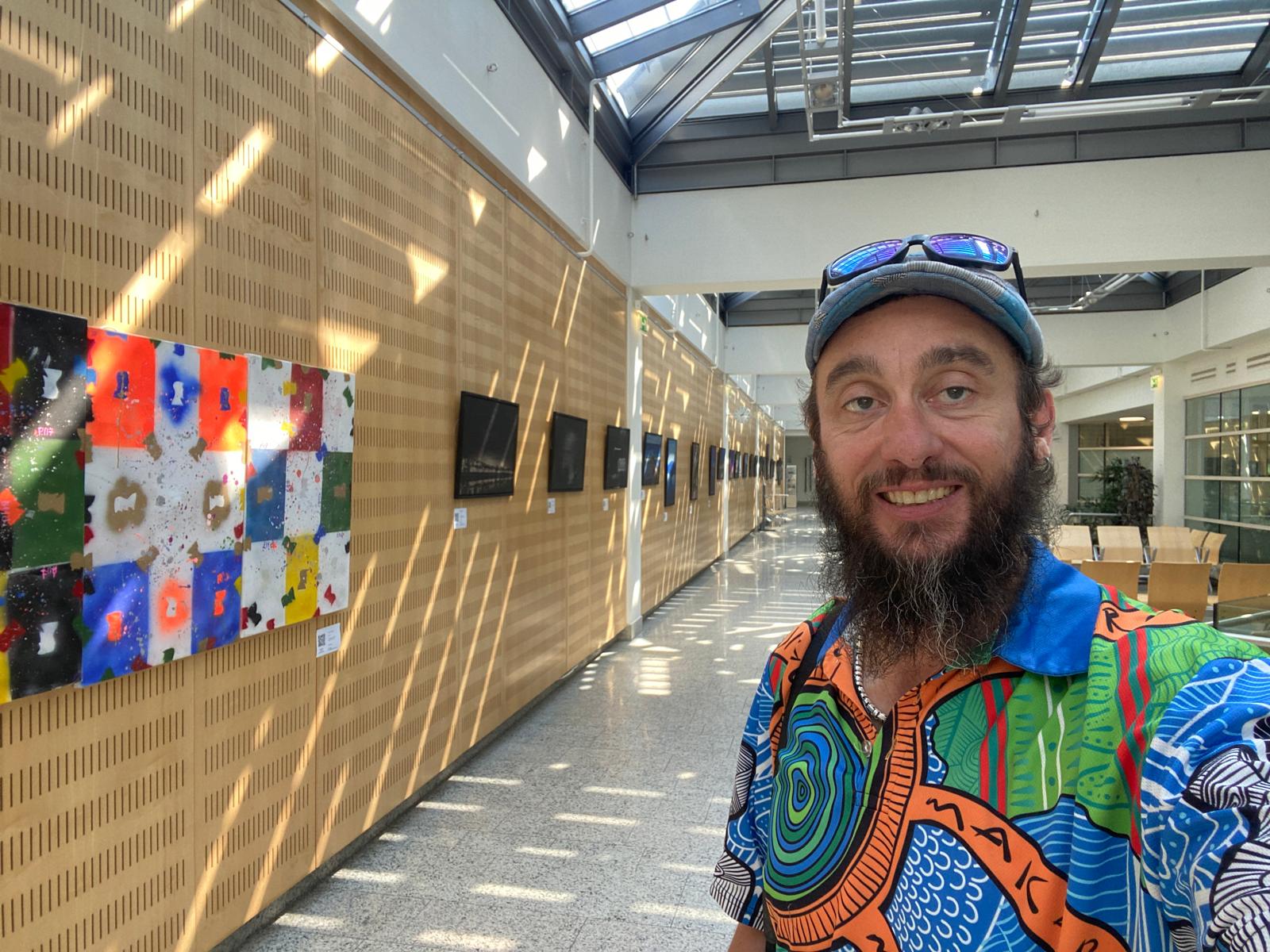
Growing up with a rare disease
By the age of 11, Benny had spent most of his life in surgery or plaster casts because of nail-patella syndrome, a rare disease he was born with. “Doctors told me I’d be in a wheelchair by the age of 30,” he says.
It was a lonely situation, which was further compounded by school bullies. Fortunately, his parents created a safe environment for him “to not feel or think that I'm disabled.” This fostered a sense of optimism, and he fixed on a plan: to defy the odds and live to the age of 117. His confidence was further bolstered by the activities he took part in with the Scouts. Overcoming physical challenges by hiking in the Barrington Tops National Park or surfing, for example, helped him to see what he was capable of.
Creative expression through poetry also offered a lifeline. A local newspaper in his native Australia published one of his first poems, entitled “Loneliness”.
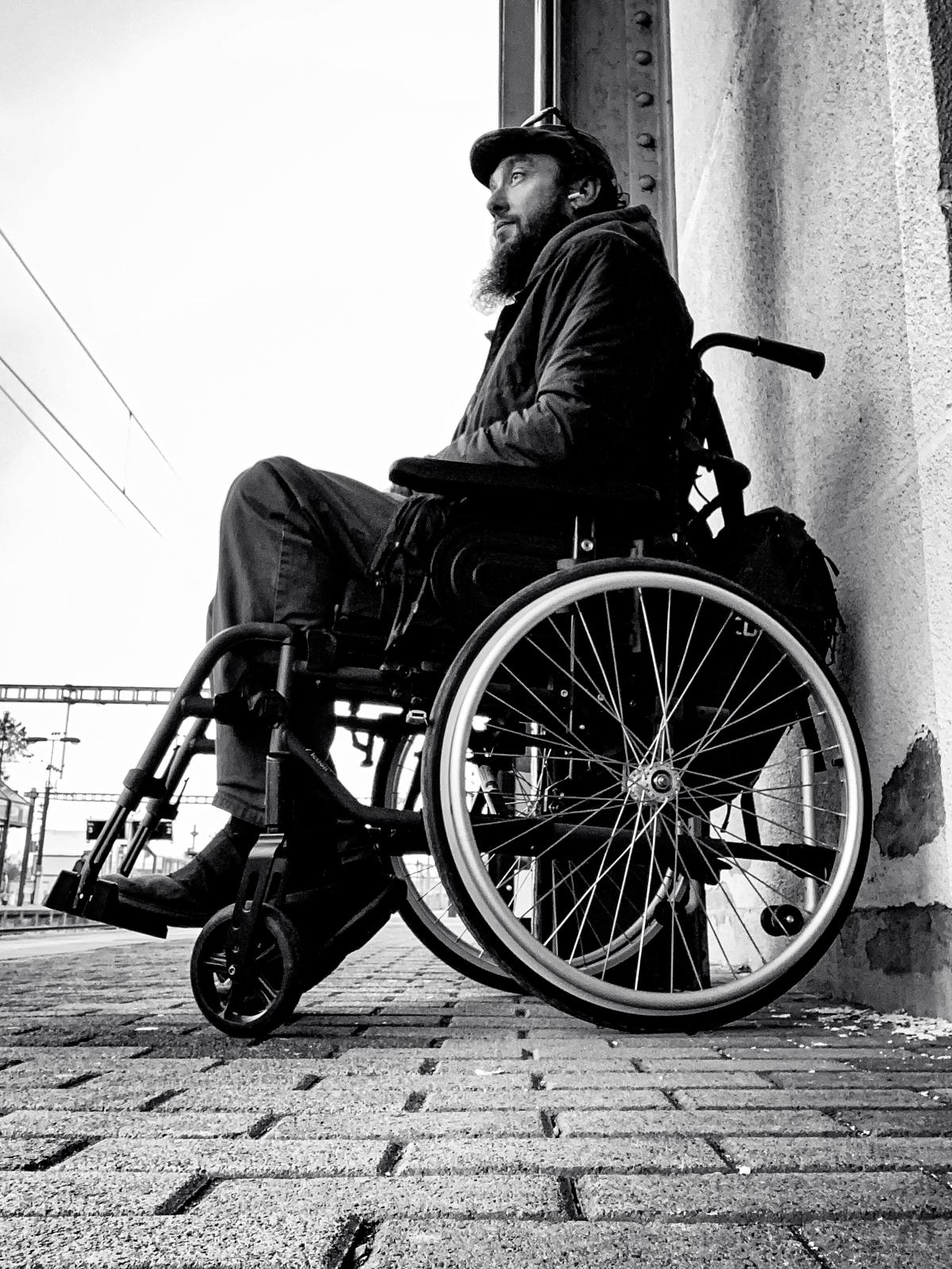
Mastering solitude
Almost 30 years later, the same theme echoes clearly in the spaces he frames in the camera lens. A rain-slick empty street in Wasserbillig, faintly lit by the glow of an orange sign, a tree petrified by the New Zealand elements, and high, lonely snowcapped mountains scored with cable car infrastructure.
“I lived in such a lonely world, dealing with my pain and my disease on my own,” he recounts. Yet his photos evoke a kind of triumph over loneliness, a mastering of solitude. They convey an exquisite stillness that feels all too often lacking in our fast-paced lives.
Benny was 15 when his grandfather gave him his first camera, a Pentax. One of the first photos he snapped was of a close friend going off a snowboard jump. “I got him dead-centre of the frame mid-grip of a snowboard, which was epic,” he recalls.
Life in the fast lane
Despite being highly intelligent (he was reading Descartes when most of us were watching cartoons), Benny opted out of university.
“I've always found that I never had time with my disease to spend a year or three years sitting down at a desk learning because my body is deteriorating so fast,” he says. As an antidote, Benny hit the accelerator, living at an intense pace. At the time his father worked as a ship engineer, and he suggested he get a deckhand certificate to work on Sydney Ferries. The fastest way: three months on a container ship in Papua New Guinea. When he returned to Sydney, Benny applied to Sydney Ferries and Sydney Buses. He decided he was a landlubber after all and became a bus driver. One of many images he recalls fondly from this time was watching the sunrise over Sydney harbour.
From Australia to Europe
In his twenties, he met a girl, fell in love, and followed her to Europe, landing a job at an Irish pub.
“Because my knees aren't really made to work in a pub [...] I needed to find a sitting job, and that's where a colleague of mine’s sister was working in Luxembourg in a finance job, and they needed somebody that spoke English yesterday.”
Benny worked in customer services, advising businesses. He says that he adored the learning journey it took him on, until his health steered him in another direction and he contracted a heliobacteria that led to emergency surgery to remove his gall bladder. At the same time, the chronic pain, which had been previously limited to his knees, spread to other joints.
When he was 40, in the middle of a series of invasive procedures and wracked with pain, Benny received an email informing him that he had been made redundant.
Making time stand still
Benny describes himself as a natural optimist, and it certainly helps that he has shared his story several times since he opened his first exhibition in 2023. There are short versions and long versions to describe the blur of what happened next. He was in and out of health appointments seeking diagnoses, dealing with acute pain and uncertainty.
But the memory of project 117 remained his guiding light. Benny purchased the cheapest camera he could afford, a Panasonic Lumix G7, read the manual, and, on lucid days, shot photos. He taught himself, and, despite knowing that his time was limited, he was patient. In some ways, time stood still in the images he captured, for example on his travels to New Zealand, his favourite ski resort in Austria, and the dark side streets of Wasserbillig, where he lives. The feelings associated with each frame are etched in Benny’s memory because they contain more than just moments. The process of editing is rich with meaning and subtext. One of the most visible is the number he embeds in each image to reflect his pain on a scale of 1 to 10.
“I’ve fallen in love with the camera as it is within my realms of ability and I can use it to explore myself and the world,” he says.
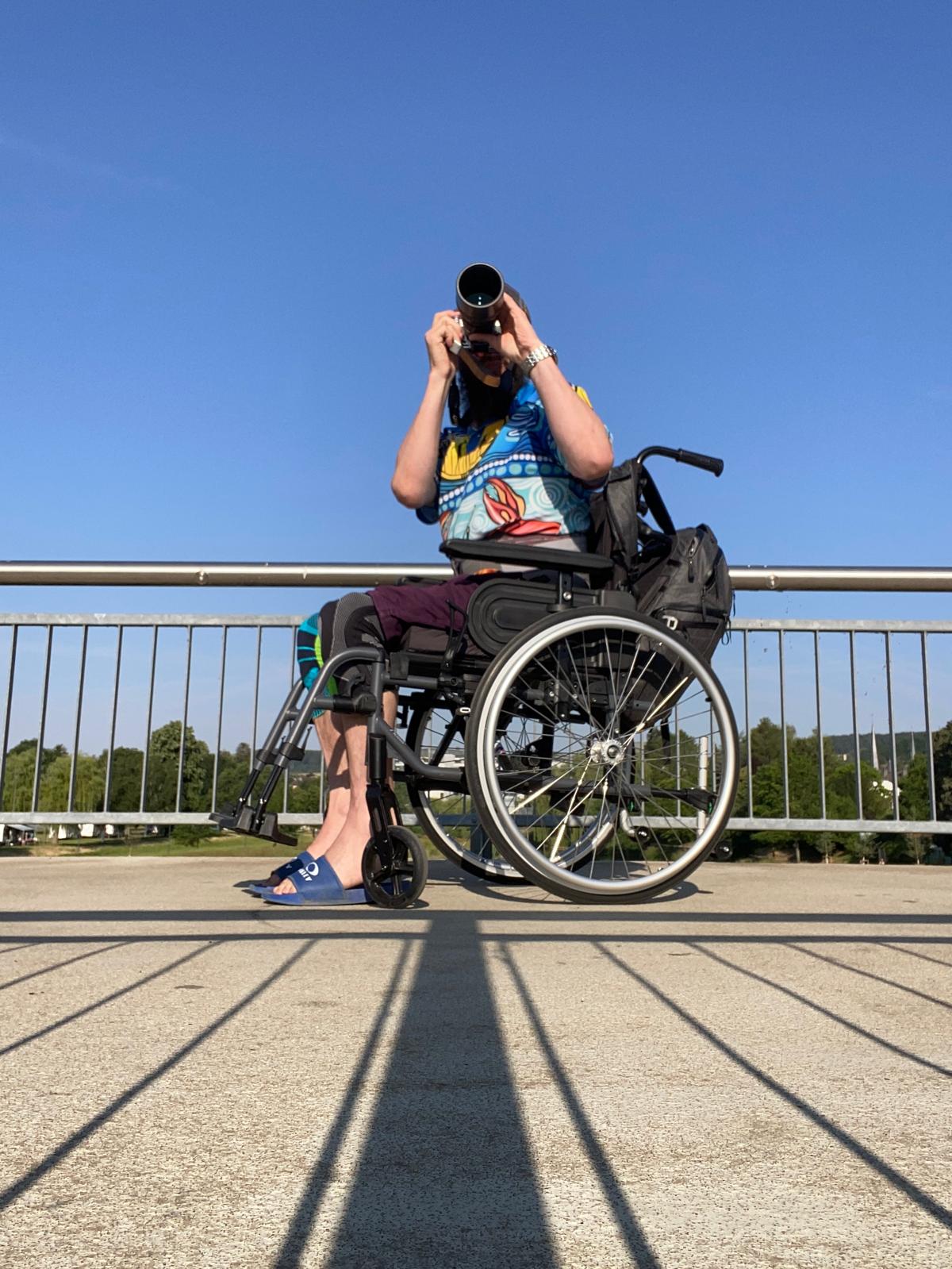
Connection
He posted the images accompanied by diary entries on Instagram, and they quickly resonated with people around the world. People living with acute pain and rare diseases followed his account and a network form. Benny spoke at a rare disease conference and, for the first time in his life, met people with the same disease. “That was just mind-blowing! [...] They moved the same way I did. That was just so beautiful,” he recalled, his voice breaking up with emotion.
Benny has also returned to his love of the written word. He is a regular at poetry and storytelling slams. And, perhaps a sign of moving on, he can also laugh at his experience in the stand-up comedy sets he performs in Luxembourg.
Of course they are complementary as forms of expression. Yet what the artist likes about photography is that it transcends language, which is important in a multicultural country like Luxembourg.
Opening up and channelling his pain through the lens of his camera has produced powerful images of resilience and reflection on the beauty of things found at the edges of society. And so it is fitting that Benny’s latest exhibition space can be enjoyed by other people who may also find themselves on the edge of a diagnosis or a major life change.
And he hopes that the latest career change will be transformational, not only for himself. One day, he’d like to open his own collective space and call it “The Gallery of Survival”.
He says, “I’d love to give back and have a space where I can collaborate with other artists, hold joint exhibitions, and get other people involved. I learned very early on that art shouldn't be done alone. It should be done with other people. It's about connecting with people.”
Visit “A Journey” at Hôpital Robert Schuman, 9, rue Edward Steichen, L-2540 Luxembourg, 1st floor, until 20 October.
Benny J will be at the exhibition at Robert Schuman Hospital for a public meet and greet on Thursday 3 October from 17:00-19:00.
Les plus populaires
- 20 juil. 2023
- 27 aoû. 2024
- 07 aoû. 2024
- 10 sep. 2024
ARTICLES
Articles
26 sep. 2024Defying time with Benny J Artist
Articles
26 sep. 2024Vera Kox à la Konschthal
Articles
25 sep. 2024